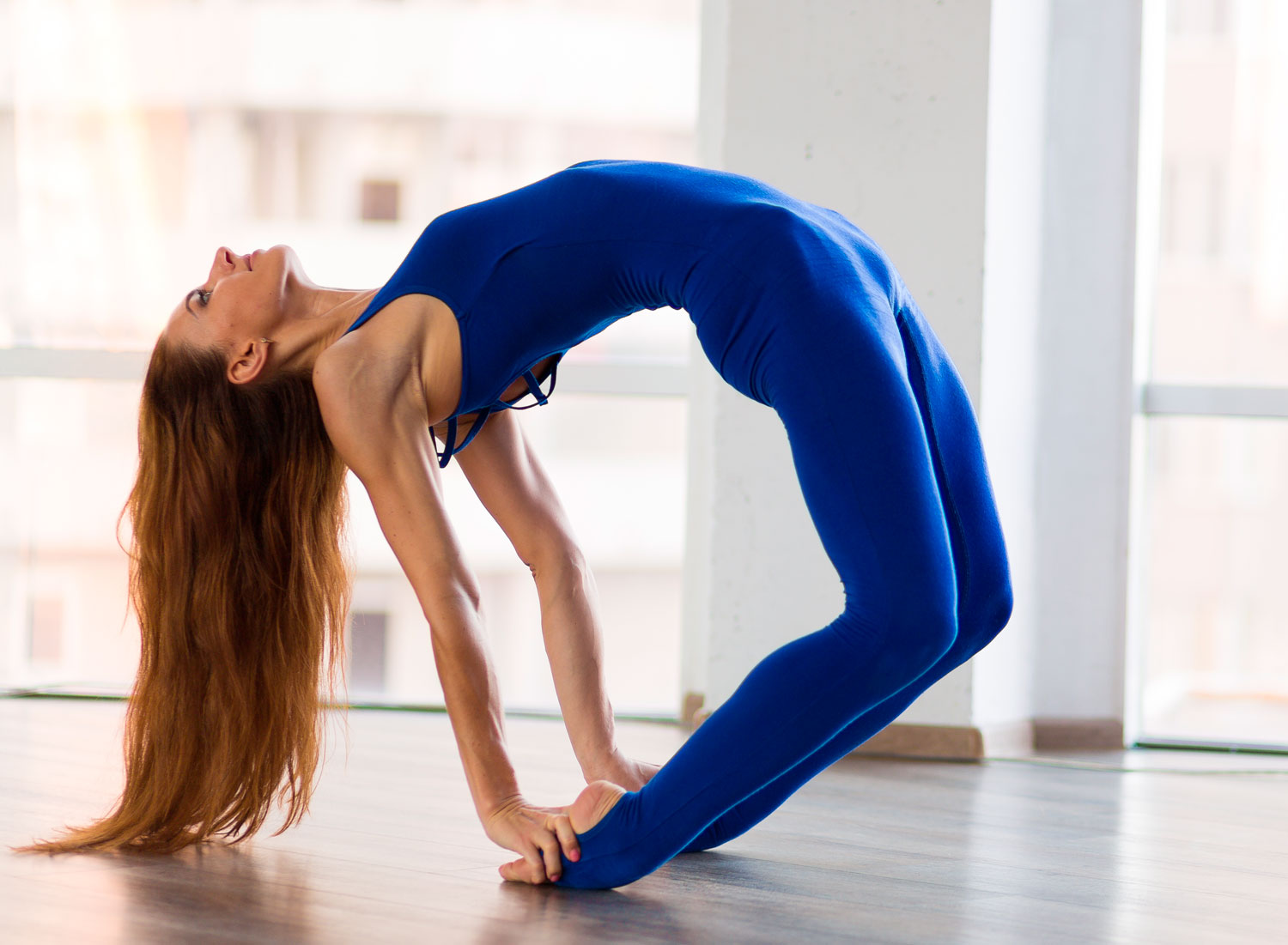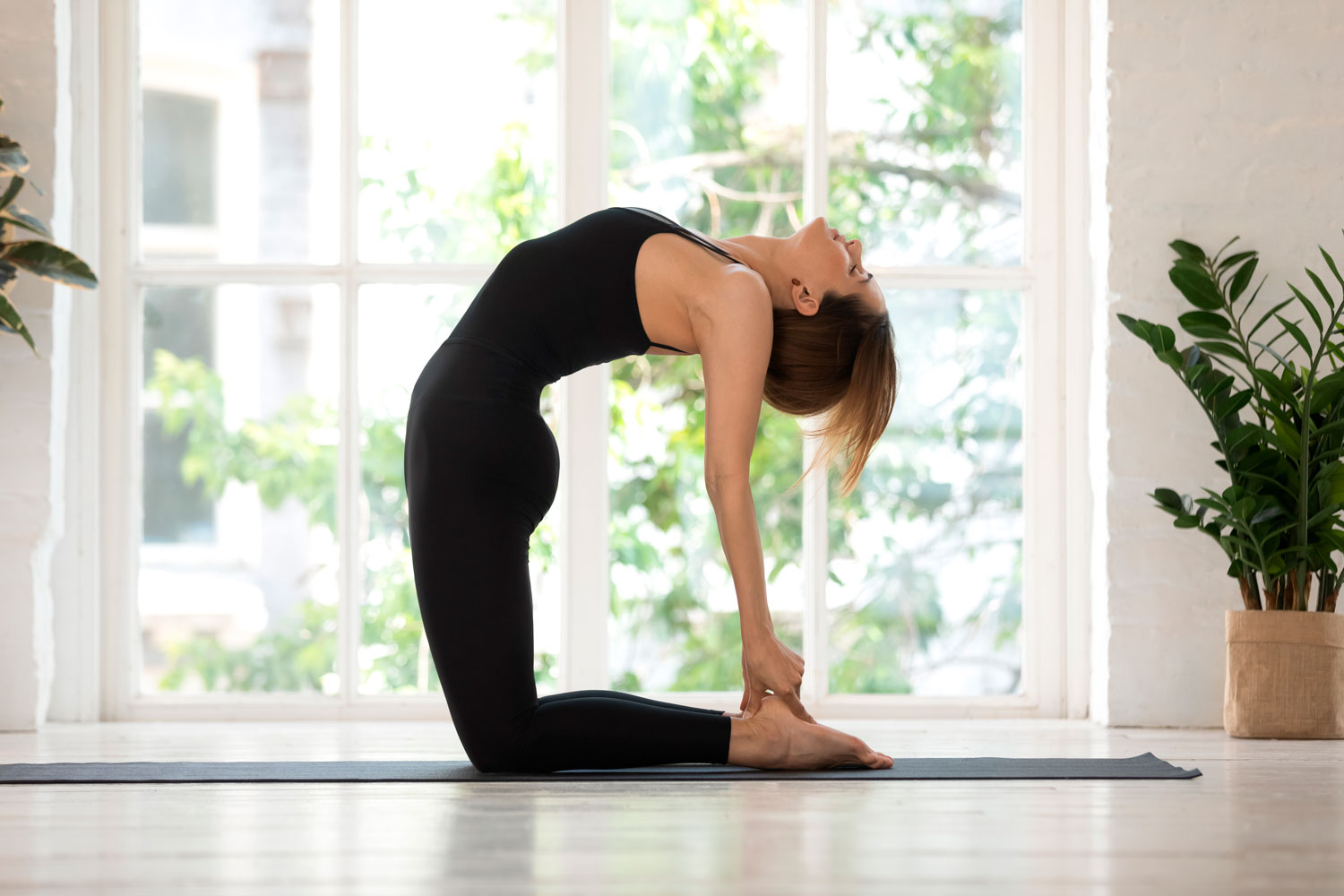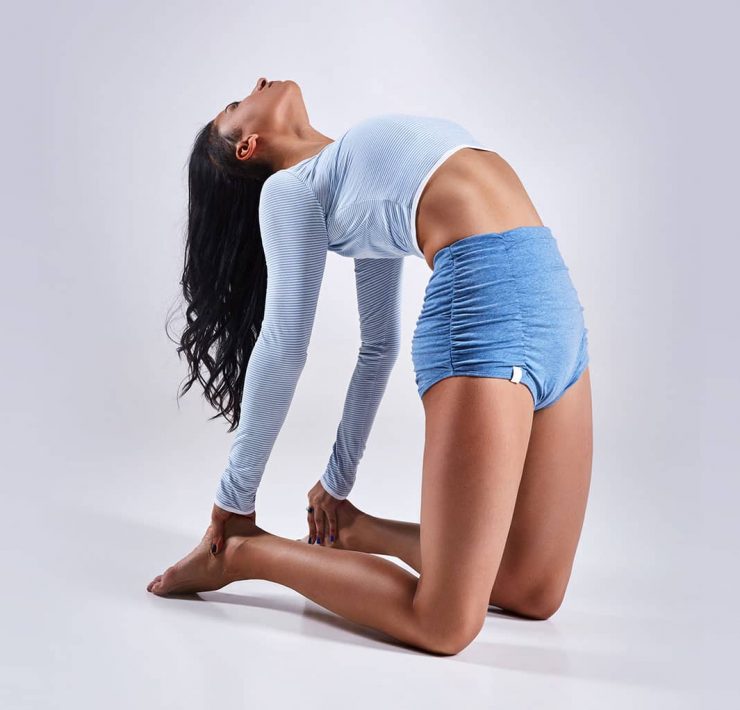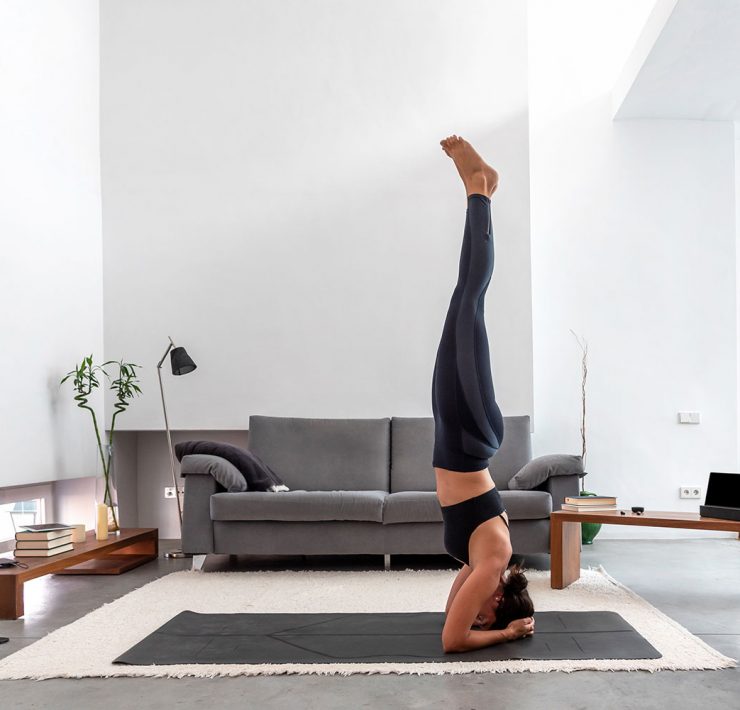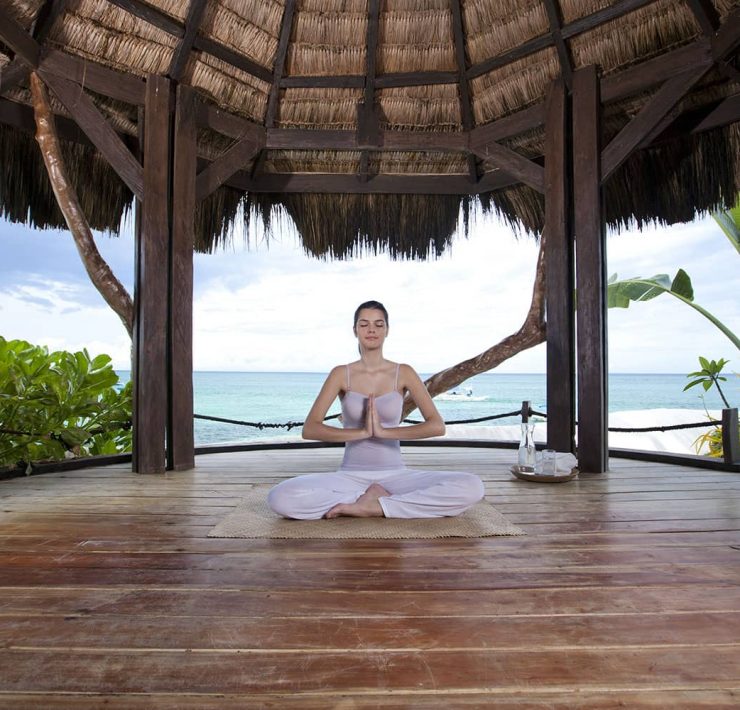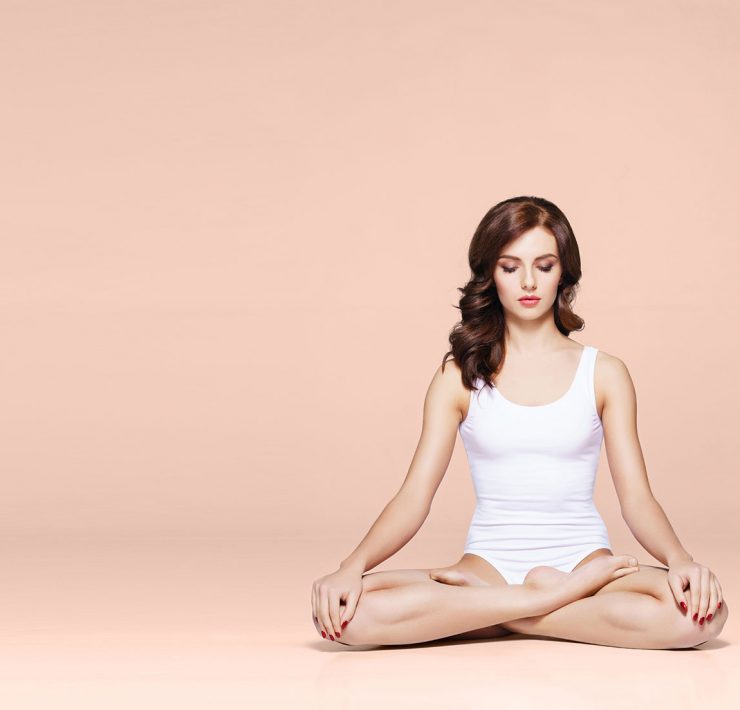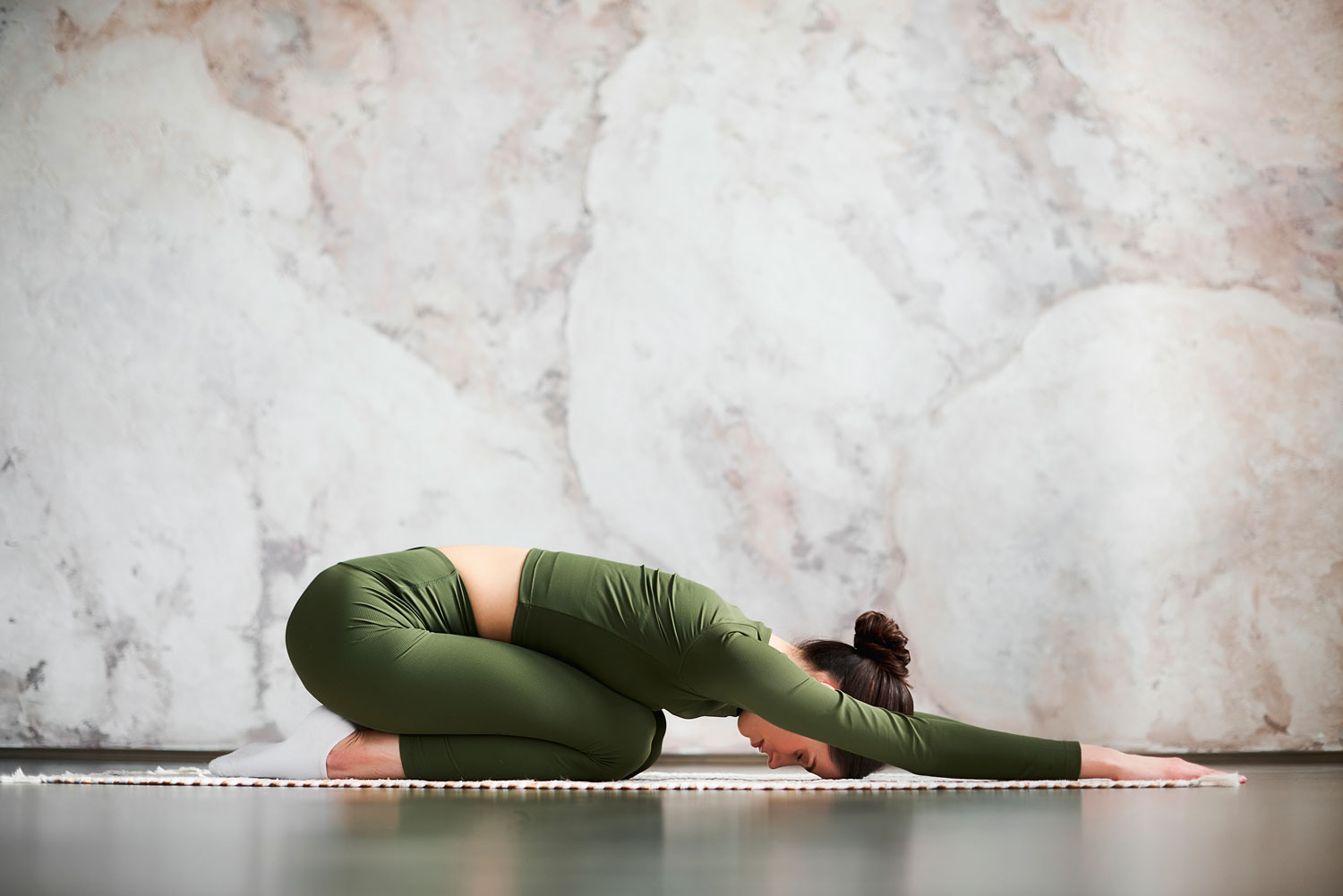
As a former social media manager and marketing guru, Amy…
Want to feel like a kid again? The Child’s Pose is just the right thing for that. Think of it as the fetal position of yoga poses.
Child’s Pose is a resting pose also known as Balasana ( bah-LAHS-uh-nuh) in Sanskrit or Child’s Resting Pose . The name derives from the Sanskrit words bala (child) and asana (posture or seat).
Child’s Pose is a beginner yoga pose that stretches the muscles of the lower back and the inner thighs and is great for someone with a tight back and hips, or anyone that needs to just stop and take a minute to relax.
This pose can be utilized at any time and is especially useful and enjoyable after a challenging pose. This fairly common and comforting pose is usually much desired after a long and possibly difficult flow.
If you’re attending classes, you’ll find yourself doing Child’s Pose most likely in Bikram Yoga, Hot Yoga, and Restorative Yoga classes.
What are the Benefits of Child’s Pose?

Child’s Pose has many amazing benefits both for the physical and mental aspects of your body. This pose gently stretches out the hips, thighs, and ankles while relieving back and neck pain. Additionally, you’ll find that this pose calms and relaxes the brain, helps relieve stress and fatigue, massages and tones the abdominal organs, and stimulates digestion and elimination.
Child’s Pose is fantastic for the third eye as well. As you place your head on the mat, your third eye (the spot just between your eyebrows) is often calmed, almost instantly. This pose quickly sends a signal to your brain that you’re safe and it’s a great time to rest which is absolutely perfect if you find yourself constantly having thoughts running through your mind.
When practicing with a partner, you can lengthen the shape of your back and create a more dome-like shape. To do this, have your partner stand on one side of you and place their hand on your sacrum with fingers pointing towards your tailbone. The other hand should be placed on your mid-back with fingers pointing towards your head. As you exhale, your partner will gently press down towards the floor and rub their hands in opposite directions.
Common and Suggested Preparatory and Follow-Up Poses

You can use one or more of the following poses and or sequences leading up to Child’s Pose: Down Dog, Up Dog, Cobra, Seated Yoga Mudra, Dog, Cat, and/or Table.
For example, a Cobra to Child’s Pose sequence stabilizes the spine due to the opposing actions of the two poses. This sequence works on balancing out the midsection muscles like the abs and back and stretches and strengthens these muscles as well.
You can use one or more of the following poses or sequences following Child’s Pose: Table, Cobra, Hero, Supine Diamond.
The most important thing to know is that Child’s Pose can precede or follow any asana pose.
Step-by-Step Instructions to Child’s Pose

Step 1
Start by kneeling on the floor. Bring your toes together until they touch and then sit on your heels. Separate your knees until they are hip-width apart.
Step 2
Exhale and lower your torso between your thighs. Narrow your hip points toward your navel. Keep your knees together or, if more comfortable, spread them slightly apart.
If you aren’t able to rest your forehead on the floor, you can place a block underneath your forehead to prevent strain only on your neck.
Step 3
Place your arms overhead with the palms on the floor, stacked under your forehead, or alongside your body with palms up. Release the fronts of your shoulders towards the floor as you feel your shoulders pull the shoulder blades wide across your back.
By keeping your arms in front, it can help you stretch and keep your tailbone lengthened
Step 4
Child’s Pose is a resting pose. Proceed to breathe slowly and deeply and you can stay anywhere from 30 seconds to a few minutes or between 4-12 breath holds.
Step 5
To release the pose, slowly inhale while lifting from your tailbone as it presses down and into your pelvis until you return to a seated position.
Injuries & Ailments

There are a few things to keep in mind before getting into Child’s Pose. While this is not a difficult pose and is great for beginners, there are still a few injuries or situations where this may need some variations.
Knees . Knee injuries are the most common issue that need some variations. First and foremost, you should avoid this pose unless under the supervision of an experienced teacher.
Back pain . Disc problems such as a herniated disk or degenerative disc disease should lead you to doing this pose with caution. It is advised that you speak with your doctor or physical therapist before this pose.
Cancer survivors. While yoga is generally great for cancer survivors, but Child’s Pose is possibly one to skip if it doesn’t feel right to you. It can be uncomfortable for a few reasons including the pressure it places on the lower vertebrae which may be compromised due to chemotherapy, abdomen sensitivity due to scar tissue or even existing tumors.
Headaches . Child’s Pose is even a fantastic pose for relieving headaches. By adding a bolster under the forehead, you can provide quick relief from headaches and relieve the tension in your neck which is often a root cause of headaches.
Variations

There may be a few instances where it is beneficial and necessary to make a few changes due to temporary or permanent reasons.
Flexibility . If you find it difficult or uncomfortable to sit on your heels in Child’s Pose, you can place a thickly folded blanket between the back of your thighs and calves for support. It is also beneficial for beginners to do this if they find it difficult to reach your heels.
Pregnancy . Women who are pregnant should only practice a wide-legged variation of the pose — do not press the belly on top of the thighs.
For Beginners

Regular practice of Child’s Pose teaches conscious exploration of the breath. We don’t typically breathe consciously and fully all the way into the back of the torso. Child’s Pose provides us with a fantastic opportunity to practice breathing consciously and fully.
Imagine that each breath inhale is working on “doming” the back and torso towards the ceiling as its lengthening and widening the spine. With each breath exhale, release the torso a little more deeply into the fold.
For Experienced

If you’re up for a challenge, you can get a deeper stretch of your hips by spreading your knees wider apart.
For Children

It may be called Child’s Pose and, ironically, this is a great pose to do with children.
As adults, we are overworked and overstressed often. It can be easy to say how much you wish you were a kid again or how lucky kids have it, but children have their own sets of difficulties even if they aren’t obvious. In today’s world, kids are very often overstimulated and over-scheduled.
Teaching children Child’s Pose early on (something that they very well may do just for fun and without thinking about it) and practicing often provides a great tool and opportunity for kids to slow down, tune in, and self-soothe.
This is a great exercise for teachers to do with the children in their classrooms, or parents to do with their kids at home as a family affair. Kids will most likely find it fun anyway, but if you need to jazz things up a little bit, you can make it a little extra exciting. Practice Child’s Pose with children by pretending to be a seed about to sprout. Or, another great option is to pretend to be
What's Your Reaction?
As a former social media manager and marketing guru, Amy is up to date on the hottest trends. Using her prior experience, she flawlessly delivers relevant and accurate information on a wide range of topics.






